Raising fishing worms can be easy of you have the right tools and the appropriate setting. In addition, if you are well informed about the different types of habitats that are ideal for fishing worms, the task just might be even easier. The first step in raising fishing worms is to determine the best type of worm to raise. Not all worms thrive under identical conditions, so its best to stick to one type of worm. It is also good to stick to one type of worm if you are interested in maintaining a small scale “worm farm.”
The best type of worm for fishing is the earthworm. There are more than 2,700 species of earthworm in existence today. Earthworms belong to one of several different types of ecological groups including: epigeic, endogeic, and anecic. The groups are based on what the earthworms eat and where they tend to live in the soil. The epigeic group is a litter feeder, litter dweller, pigmented, small in size, and it doesn’t burrow. The endogeic group consists of rich soil feeders, topsoil dwellers, has no pigmentation, burrows horizontally, and it is small in size. The anecic consists of litter and soil feeders, soil dwellers, dorsally pigmented bodies, extensive vertical burrows, and a large size.
Worms can be found in just about every corner of the earth. They live in trees and bark, and under rocks as well as along rivers, and near springs, and ponds. Their favorite place to live, however, is in the earth’s rich soil. During the winter months they burrow deep within the earth until the surface warms again during the spring. During the warm summer months, worms stay closer to the tops of soil where they create tunnels to wiggle in and out of. These tunnels are extremely important for plant life as they create a path for water and air, which is essential for the survival of plant life.
Worms of all kinds can be found all over the world in places like China, Australia, Greenland, and the Sahara Desert — which has its own indigenous species of worms. Besides the Sahara Desert, it is unlikely that you will find large numbers of worms living in “sandy” areas, especially sandy beaches. The vast majority of worms on our planet can only survive under certain conditions.
Worms have no lungs. This means, they breathe through their skin, so the worm’s environment and the worm’s skin must be moist at all times. This allows the worm to breathe in oxygen. While the sand may be moist and wet closer the water, the majority of the sand is dry. If the worm’s skin dries out, the worm will die from suffocation. In addition, too much moisture can also be detrimental to worms. If too much water is present, it takes the place of oxygen, which will cause the worms to flee to the surface. Once on the surface, worms will be exposed to sunlight. If worms remain in the sunlight for too long, they can become paralyzed.
Next, worms must remain close to their food supply. Worms feed off of leaves and dead grass, which contain organisms that provide a healthy diet of bacteria, algae, and fungi to the worm. Worms feast on dirt as well, especially if they live deeper inside the earth. Worms also eat plants, fruits, and vegetables.
Believe it or not, worms do have mouths. Their mouths are actually big enough and powerful enough to grab a leaf and drag it around. They also have a pharynx, esophagus, crop, gizzard and intestine. When the worm eats its food, it pulls the materials into its mouth with the help of the pharynx and its prostomium (also called acron). This creates a suction motion. This suction motion aids in helping the worm consume large amounts of food in a sort amount of time. The gizzard grinds the food. Worms eat so much that they typically produce excrement equal to their own weight every 24 hours.
When it comes to reproduction, the worm’s environment plays an extremely important role as well. Worms prefer to mate or reproduce in warm moist soil and away from light, of course. Once you understand the type of environment that is needed for your earthworms to thrive, you can begin raising fishing worms. All that is needed now is a deep pan or aquarium, soil, and the organic food sources listed above. Pack the soil tightly to allow the worms to “tunnel.” This will keep them happy and doubling in population every 3-4 weeks.
All About Worms is always free, always reader-supported. Your tips via CashApp, Venmo, or Paypal are appreciated! Receipts will come from ISIPP Publishing.



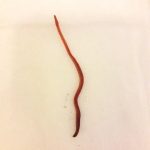
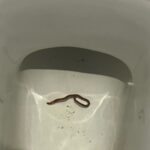


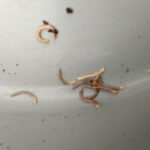
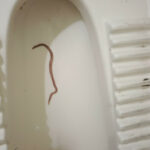
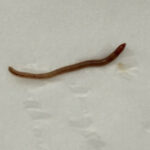






I live in Hong Kong and am interested to raise black worms for my goldfish as a natural source of food. Could you advise how I could or should proceed. I do not mind importing live worms for a culture.
Looking forward to hearing from you.
Sincerely ,
Peter Fung